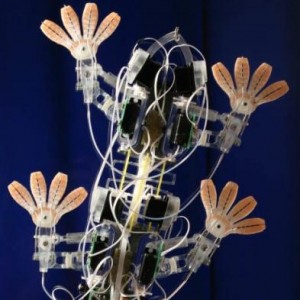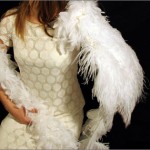Here are three (yesterday, I mistakenly said there would be two) more of Mr. Manning’s answers,
- Do you know of any areas where Canadians are leading in science and technical innovations?
Some of the areas where Canada is at the leading edge in science and technology include cellular communications and genetic science (Toronto), space technology and robotics (the Canada Space Agency, the Canadarm, etc.), immunology and disease control (Winnipeg), in situ oil recovery (Ft. McMurray and Calgary), etc. The Canadian scientists who have won Nobel prizes also indicate some of the areas where Canada has led or is leading in science.
- In your speech you mention the macro level for allocating science funds and make some suggestions for the Science and Technology Innovation Council regarding a more transparent and open process for decisionmaking and developing a structure and set of principles. (a) I’m surprised this hasn’t been done before! (b) How would you operationalize (or implement) your suggestion if asked to do so?
My suggestion was that the federal government through Industry Canada direct the Science, Technology, and Innovation Council (STIC) to make clear the structure, processes, and principles upon which funds are allocated.
Here is the last question,
- This one is on a somewhat different topic. I understand that you are still a member of the NINT board. (Please do correct me if this information is incorrect.) What is your view on the Canada nanotechnology scene given that unlike many countries (US, China, Saudi Arabia, Denmark, Germany, Russia, etc.) have nanotechnology initiatives/policies, Canadian NanoBusiness Alliance has shut its doors, NanoTech BC is struggling for existence, and NINT has gone through an identity change (it no longer has its own website or unique identity online)?
With respect to the current state of nano-science and nanotechnology in Canada, you would have to consult experts in this field to get a definitive answer. But it is my impression from my exposure to the National Institute for Nanotechnology at the University of Alberta that modest but steady progress is being made. I think it is important to distinguish between the media and public-relations hype which invariably surrounds a new science and technology, and over-promises, and the reality of the slow and painstaking step-by-step progress of the development of any science or technology.
Thank you Mr. Manning for taking the time to answer my questions. The answer to the last question is particularly interesting to me (given the purpose for this blog) and certainly bears out some of my own experience. There is much hype but the real work is ‘slow and painstaking’. Mr. Manning will be a keynote speaker, along with Gary Goodyear, Minister of State for Science and Technology, at the Canadian Science Policy Conference on Oct. 28 – 30, 2009 in Toronto. Details of the conference here.
I got this information from the Project on Emerging Nanotechnologies (PEN) but it seems to be a Wilson Center event more than anything else. NOTE: The times listed are EDT.
On September 18th the Wilson Center and Environmental Law Institute will release new data on the flow of energy (in BTUs) and the flow of dollars (in terms of subsidies) through the U.S. economy. We hope you can join us for:
Perverse Incentives: The Untold Story of Federal Subsidies to Fossil Fuels
The ongoing debates about biofuels, cap and trade legislation, and paths to energy independence have focused public attention on energy and climate issues like never before, with policymakers taking a heightened interest in renewable energy and its economic viability. Against this backdrop, the Environmental Law Institute and the Woodrow Wilson International Center for Scholars have completed a comprehensive study of federal subsidies to fossil fuel and renewable energy sources. Our data reveal surprising facts about where public funds are going and how our current energy policy may actually undermine the transition to a low-carbon economy.
Join us on September 18, 2009, from 9 a.m.-11 a.m. in the 5th floor conference room at the Woodrow Wilson Center as we discuss our findings and their implications for future energy and climate change policy. The event will also be webcast live at www.wilsoncenter.org.
A light breakfast will be served starting at 8:30 a.m.
To attend this event, RSVP to
mcmurrin@eli.org.
No RSVP is required to view the webcast.
There’s another event, one I’ve mentioned before, on Sept. 23, 2009 on Transatlantic Regulatory Cooperation: Securing the Promise of Nanotechnologies. I have the details here in my June 30, 2009 posting. As usual with a PEN event, there will be a webcast (12 – 2:30 pm EDT) or if you’re going to the live event, you can RSVP here.
The ASTC (Association of Science and Technology Centers) is having its conference Oct. 31 – Nov. 3, 2009 in Fort Worth Texas. NISE Net (Nanoscale Informal Science Education Network) will be hosting a few events and is offering nine conference sessions. From the NISE Net newsletter, here are the conference sessions,
- Interpreting the Nanoworld through Juggling, Drama, Art, and Media
- Public Engagement with Science and Technology Policy: How Far Should We Go?
- Making the Invisible Visible: Visualizing Emerging Science with Artists
- Dimensions of Public Engagement: Finding Your Footing in a Paradigm Shift
- Public Impact Results for the Nanoscale Informal Science Education (NISE) Network
- Creative Programming and Current Science Learning
- Sustainable Diversity Workshop: Conversation and Tools for Inclusivity
- Science Alliance: Advancing Science Communication by Bridging Diverse Organizations
- Public Engagement in Current Science and Global Issues
Wish I could go (and the Canadian Science Policy conference too). ASTC conference details can be found here.
I should also mention that the online consultation for Canadian copyright is drawing to a close on Sept. 13, 2009. If you are interested in making a submission, you can go here.
Let’s close the week with some nano haiku. From the NISE Net newsletter,
Nano, oh nano
With surface area so
Small, but big impact
by Keith Ostfeld of the Children’s Museum of Houston.
Happy weekend!

